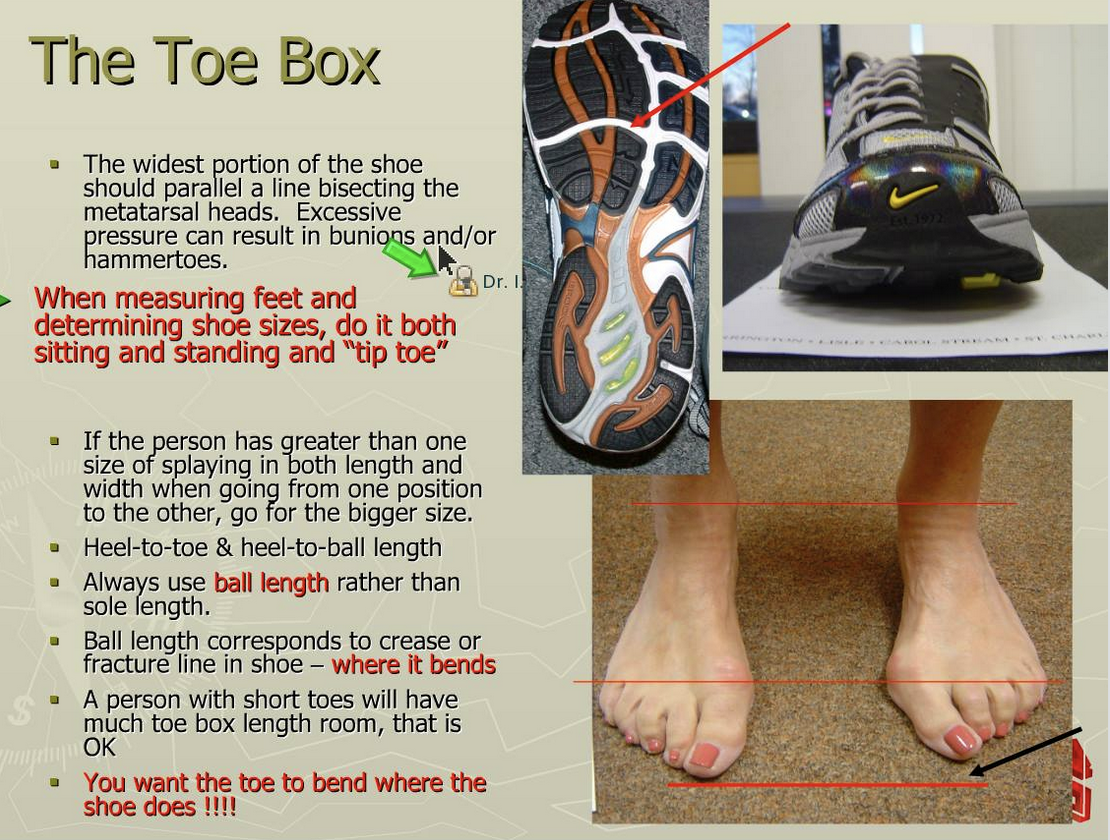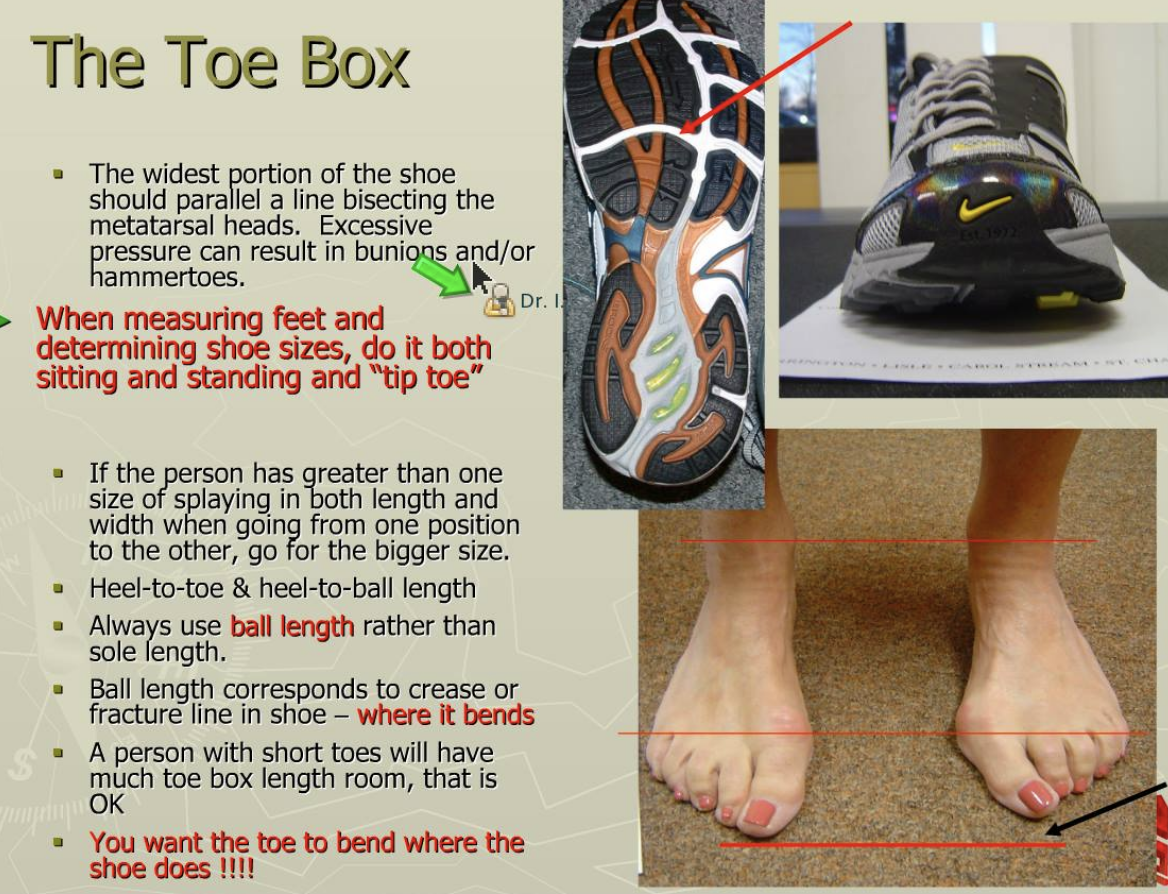Bunions should change how you approach shoe fit. Bet you didn't consider this aspect.
/Bunions and hallux valgus can change the toe box volume and shoe choice, so be careful, don't be fooled.
This photo shoes how a change in the forefoot width and length can be a result of a bunion or hallux valgus. Notice both feet are aligned the same, but the length of the foot is different in the hallux valgus foot.
The old Brannock device use to help us all see this more clearly. You may recall that the device measured "heel to toe" (True foot length) and ALSO "heel to ball" length (the functional length and more important one. This length measured heel to the metatarsophlanageal joint line. This concept is important to know because we want the shoe "break point" or "bend point" at the forefoot to occur where the foot bends. Not all shoes have the flex lines (the creases on the bottom of the shoe were it is most likely to bend) in the same place, there is no standard. And if your client has shorter toes, longer toes or a long or short "heel to ball" length they man needs some help from a knowledgeable person like yourself making sure that their current forefoot complaints are not from a mis-fitted shoe.
Bottom line, the "heel to ball" length of a foot is far more important than the global foot length "heel to toe". So stop judging your shoe fit by pinching the front of the shoes to "make sure you have plenty of room"! Doh ! Face palm !
Because despite what many of the "experts" online are saying, that being "shoes don't matter". The fact is "sometimes they do". Period.
WAnt to learn this stuff? Got our website and buy the National Shoe Fit program. Hours of deep shoe, anatomy and biomechanics fun with ivo and shawn, in your own home over the holidays ! Give yourself the "gift" of ivo and shawn this year ! LOL




























